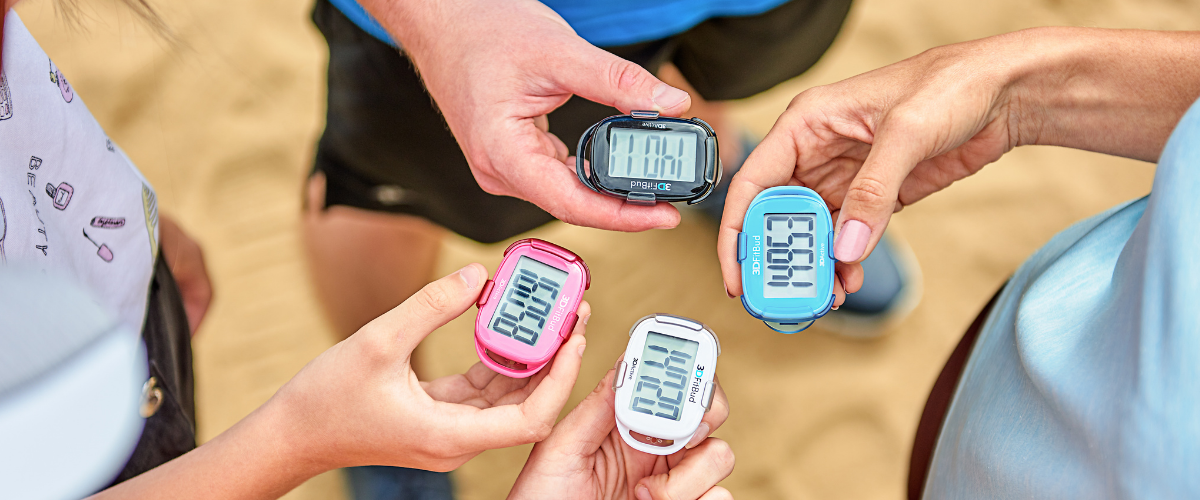Power bands, resistance bands, pull-up assist bands, booty bands, tube bands. You’ve probably come across one of these before and they are all names used to describe several types of elastic bands used as a means to strengthen your muscles, improve your resistance, or help with injury recovery and physical rehabilitation.
Let’s break down different types of resistance bands and what they’re used for.
Power Bands

Power Bands are also commonly known as pull-up assist bands or loop bands and are made from high quality natural rubber latex.
These bands are extremely versatile and can be used for a huge variety of exercises from push ups, pull ups and curls through to lunges, squats and leg presses. Lower tension bands can also be used for muscle rehabilitation, warm-up exercises and correcting mobility issues.
Power Bands tend to be the same length and thickness but vary in width and it is this variation in width that provides the difference ranges of tension levels. This makes them ideal for strength training workouts and a great substitute for weight training if you do not have access to weights or a gym.
3DActive Power Bands come in a range of five tension levels from Extra-Light 10 to 35lbs of tension to Extra-Heavy providing up to 175lbs of tension.
Fabric Bands

Fabric Bands or Booty Bands as they are also called, are shorter closed loop resistance bands, usually made from a combination of fabric and latex. These are primarily used to target your glutes but also your lower body, as well as your arms and shoulders. Because they are muscle specific bands, these aren’t as versatile as Power Bands, but you can still get a great workout from them since they offer greater resistance when stretching them out.
These bands are mostly used together with other equipment and to complement different exercises and to help with stability and maintaining proper form, but they can be used on their own for targeted workouts.
3DActive Fabric Bands come in three different tension levels, Light, Medium and Heavy, which you can switch or combine for different types of workouts and to suit your needs.
Tube Bands

Tube Bands come with several different accessories that allow you to customize your workouts as you see fit. 3DActive Tube Bands come with two handles, a door anchor, and an ankle strap, plus a mesh bag for easy storage and to travel with.
These bands are used mostly for building muscle strength and size, and are suitable alternatives to free weights or machines you’d normally use at a gym. Because of the rings at each end of the bands and the handles with carabiners they come with, Tube Bands can be stacked or used individually to increase/decrease the resistance level.
Why Should You Use Resistance Bands?
No matter which type of band you end up picking, they are a great addition to your workouts whether you have access to a gym and equipment or not.
1. Not like weights, but better
Dumbbells or free weights exercises are great for building up and strengthening your muscles, but with resistance bands you’ll be applying much more constant tension to your muscles with the added benefit of lowering risk of joint injury or pain.
Resistance bands will improve the quality of your reps and contract your muscles more effectively, thus benefiting you in the long run.
If you happen to suffer from joint pain or are recovering from an existing injury, resistance bands can also be used as a substitute for heavier weights you’d normally have to avoid.
2. Control and good form
Because there’s constant tension from resistance bands, you need to have good control over your form and balance, which means they might be a bit shaky to use at first, especially if you’re only used to free weights.
By teaching yourself to control the tension and release of the bands, you will be working on your functional fitness and get stronger down the line.
A pro tip is to make sure you are maintaining the same tension or pull strength on the band with each rep, rather than letting the band snap back into place - which would most likely cause injury or damage the band.
3. Functional training and flexibility
Rather than staying static and only activating certain muscle groups, which happens with more traditional workouts, using resistance bands will have you perform several movements at once, usually movements you already do day-to-day, improving your flexibility over time.
The benefits of this are many. You’ll also be strengthening your bones, not only your muscles. And because resistance bands are joint-friendly, the impact of using them even in high intensity workouts, means you won’t be putting your body at risk of injury the same way you would with other types of workouts.
4. Recovery and rehabilitation
For those recuperating from a sports or muscle related injury, resistance bands are not a new concept. They’ve been used by physical therapists for years now, mainly because the pressure they apply to your joints and every other area of your body is much lower than what weights would do.
5. Suitable for all fitness levels
Worried resistance bands might be too complicated or too advanced for you when you just started working out or joined a gym? Think again.
Because resistance bands work your muscles in a similar fashion to weights - your muscles contract to stabilize your movement - they have the added benefit of not relying on gravity for the resistance needed to perform the exercises.
People of any age (kids and elderly people when supervised) and fitness level can get a full workout from resistance bands, from the lower to mid tensions levels, since they can be perfectly used for stretches and other exercises when sitting down or supporting yourself.
Which bands should you choose then?
If you’re not sure which type of bands are suitable for you or which bands will help you achieve your goals, the best thing you can do is get a lower tension Power Band at first, and over time increase the tension level of the bands you’re using.
If you’d like to go for a full set, Fabric Bands or Tube Bands come with all tension levels and some accessories so you can have them handy when you do decide to take your workout to the next level.
Because you can choose which band to use and how to use it in any exercise, the choice is up to you.
And, as always, we remind you that the advice and information we provide here is purely for your consideration and not medically or professionally attested. Before you start any workout program or use any piece of equipment, consult with your physician or personal trainer to know what works best for you and how you can use it to the best of your abilities.



